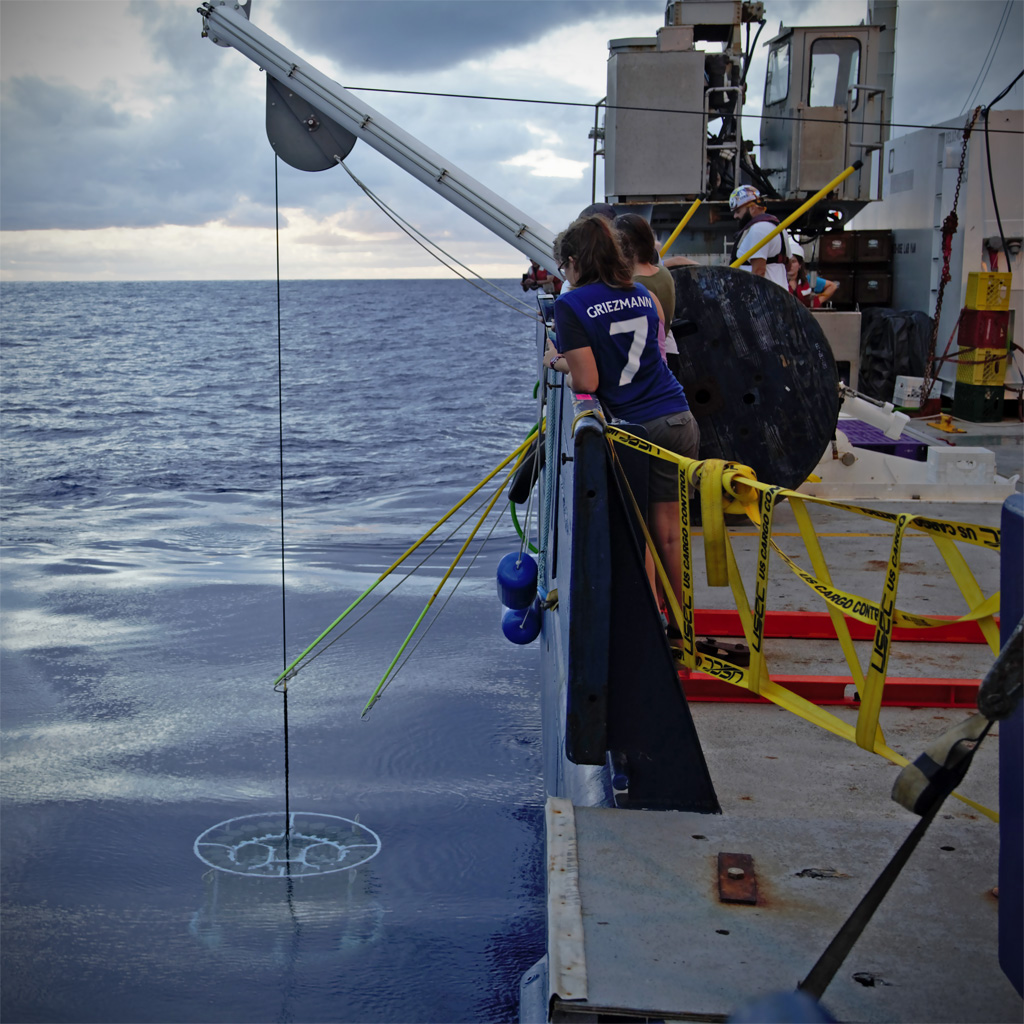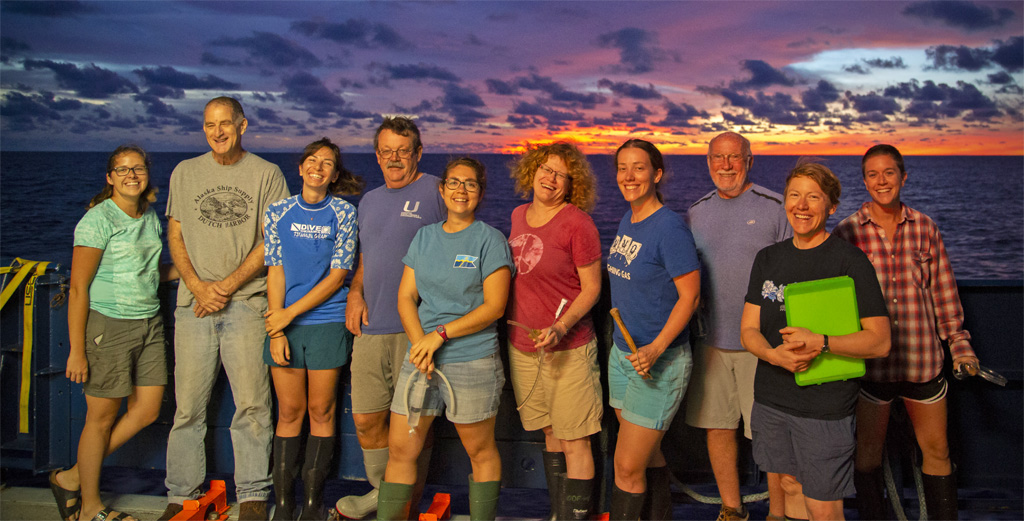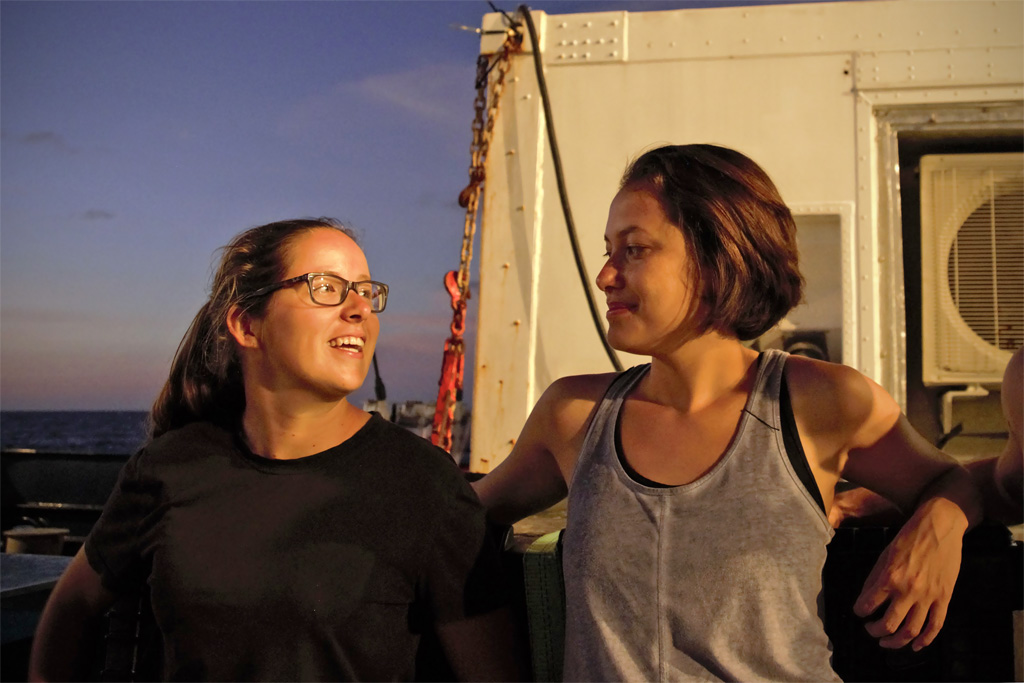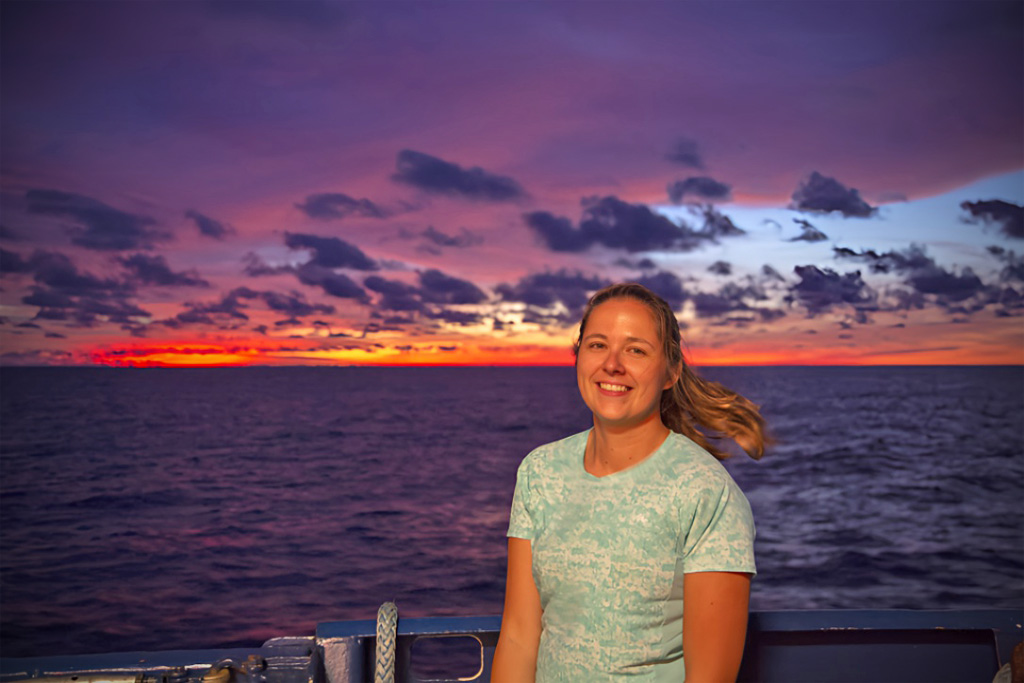Paper in press: Biogeochemistry and budgets of barium and radium-226 in the Pacific
I’m delighted to report publication of ‘Controls on dissolved barium and radium‐226 distributions in the Pacific Ocean along GEOTRACES GP15,’ in a special issue of Global Biogeochemical Cycles dedicated to The U.S. GEOTRACES Pacific Meridional Transect (GP15). The study was led by Emilie Le Roy, who was a NIRVANA Lab Postdoc between 2019–2021. Below is a summary describing what it’s about.
Barium and radium-226 are commonly used as proxies for nutrients and ocean circulation, but they also serve as important marine biogeochemical tracers in their own right. Researchers have recognized a strong correlation between these two elements throughout the oceans since the 1970s. This makes sense given that both elements are chemical cousins in Group II of the periodic table. Despite their chemical similarities, barium and radium-226 come from different sources and undergo unique biogeochemical processes that influence their concentrations.
For example, dissolved barium is mostly sourced from rivers and groundwater, whereas radium-226 primarily originates from deep-sea sediments through the decay of thorium-230. Both elements are removed from surface waters by incorporation into particles and then released at greater depths, mainly in association with the precipitation and dissolution of the mineral barite. However, radium-226 also undergoes removal from seawater via radioactive decay, with a half-life of approximately 1,600 years, adding another layer of complexity not seen with barium. Understanding the seemingly coupled behaviors of barium and radium-226 in the ocean has been a significant goal in chemical oceanography for over fifty years.
In Le Roy et al. (2024), we obtained a comprehensive dataset of barium concentrations and radium-226 activities from samples collected during GEOTRACES GP15 in the Pacific Ocean along 152 °W. We combined our new data with a statistical model of water mass abundances, allowing us to distinguish between biogeochemical processes and ocean circulation influences—non-conservative and conservative factors—on their respective distributions.
Our study yields three main findings:
- In the upper ocean, barium and radium-226 undergo significant biogeochemical removal, likely due to the precipitation of microcrystalline barite formed during the breakdown of organic matter. The greatest removal of both elements occurs in regions of high productivity, such as the North Pacific near the Alaskan Margin, and in the subsurface where most barite forms.
- In the deep Pacific Ocean, barium concentrations and radium-226 activities are among the highest globally. This can be attributed to two processes: initial enrichments from inflowing Antarctic Bottom Water and the accumulation of both elements as this water moves northward and interacts with sediments. Additionally, slow circulation in this region allows both elements to accumulate significantly in deep waters via the dissolution of sinking particles at or near the seafloor.
- Despite the significant non-conservative enrichment of barium and radium-226 in the deep Pacific, they exhibit distinctive patterns of benthic enrichment. Radium-226 has additional sources compared to barium, such as the decay of sediment-bound thorium-230, which releases radium-226 into the deep ocean, and hydrothermal venting, which affects radium-226 but not barium.
With these distributions mapped and the non-conservative processes quantified, we constructed a basin-wide mass balance for barium and radium-226 in the Pacific Ocean. This calculation revealed a deficit in surface barium sources and a significant excess in deep radium-226 sources. These imbalances suggest the need for further studies to identify the mechanisms of barium replenishment to the North Pacific and the fate of radium-226 exported from this region.
The paper is Open Access and can be downloaded here. Congratulations Emilie on a great study!
Citation: Le Roy, E., Charette, M.A., Henderson, P.B., Shiller, A.M., Moore, W.S., Kemnitz, N., Hammond, D.E., & Horner, T.J. (2024). Controls on dissolved barium and radium‐226 distributions in the Pacific Ocean along GEOTRACES GP15. Global Biogeochemical Cycles, 38(6), e2023GB008005, doi:10.1029/2023GB008005.

Emilie watches the recovery of the GEOTRACES Carousel during GP15

Group photo after the last CTD cast of GP15

Emilie Le Roy (L) and Jennifer Kenyon (R) share a moment

The study’s lead author and a sunset toward the end of the expedition
